Liang Liang
A Computational Pipeline for Patient-Specific Modeling of Thoracic Aortic Aneurysm: From Medical Image to Finite Element Analysis
Sep 16, 2025Abstract:The aorta is the body's largest arterial vessel, serving as the primary pathway for oxygenated blood within the systemic circulation. Aortic aneurysms consistently rank among the top twenty causes of mortality in the United States. Thoracic aortic aneurysm (TAA) arises from abnormal dilation of the thoracic aorta and remains a clinically significant disease, ranking as one of the leading causes of death in adults. A thoracic aortic aneurysm ruptures when the integrity of all aortic wall layers is compromised due to elevated blood pressure. Currently, three-dimensional computed tomography (3D CT) is considered the gold standard for diagnosing TAA. The geometric characteristics of the aorta, which can be quantified from medical imaging, and stresses on the aortic wall, which can be obtained by finite element analysis (FEA), are critical in evaluating the risk of rupture and dissection. Deep learning based image segmentation has emerged as a reliable method for extracting anatomical regions of interest from medical images. Voxel based segmentation masks of anatomical structures are typically converted into structured mesh representation to enable accurate simulation. Hexahedral meshes are commonly used in finite element simulations of the aorta due to their computational efficiency and superior simulation accuracy. Due to anatomical variability, patient specific modeling enables detailed assessment of individual anatomical and biomechanics behaviors, supporting precise simulations, accurate diagnoses, and personalized treatment strategies. Finite element (FE) simulations provide valuable insights into the biomechanical behaviors of tissues and organs in clinical studies. Developing accurate FE models represents a crucial initial step in establishing a patient-specific, biomechanically based framework for predicting the risk of TAA.
A New Paradigm in Tuning Learned Indexes: A Reinforcement Learning Enhanced Approach
Feb 07, 2025
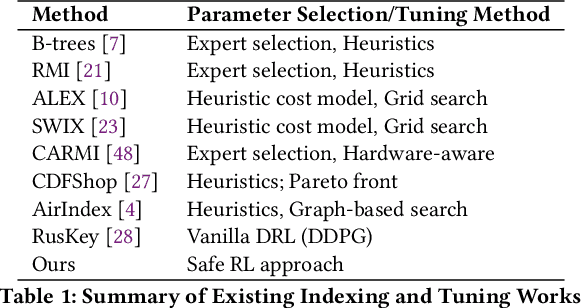
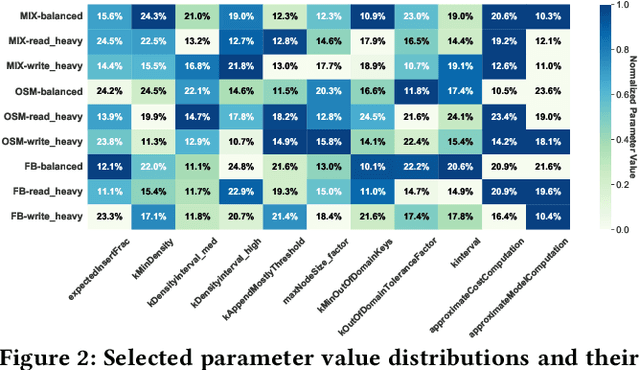
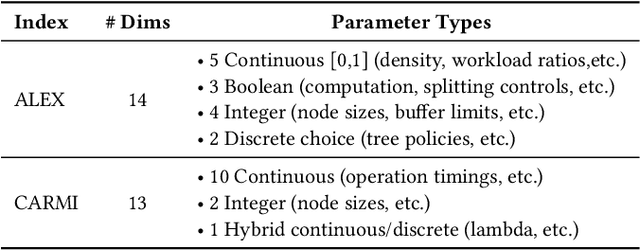
Abstract:Learned Index Structures (LIS) have significantly advanced data management by leveraging machine learning models to optimize data indexing. However, designing these structures often involves critical trade-offs, making it challenging for both designers and end-users to find an optimal balance tailored to specific workloads and scenarios. While some indexes offer adjustable parameters that demand intensive manual tuning, others rely on fixed configurations based on heuristic auto-tuners or expert knowledge, which may not consistently deliver optimal performance. This paper introduces LITune, a novel framework for end-to-end automatic tuning of Learned Index Structures. LITune employs an adaptive training pipeline equipped with a tailor-made Deep Reinforcement Learning (DRL) approach to ensure stable and efficient tuning. To accommodate long-term dynamics arising from online tuning, we further enhance LITune with an on-the-fly updating mechanism termed the O2 system. These innovations allow LITune to effectively capture state transitions in online tuning scenarios and dynamically adjust to changing data distributions and workloads, marking a significant improvement over other tuning methods. Our experimental results demonstrate that LITune achieves up to a 98% reduction in runtime and a 17-fold increase in throughput compared to default parameter settings given a selected Learned Index instance. These findings highlight LITune's effectiveness and its potential to facilitate broader adoption of LIS in real-world applications.
Attention-based Shape-Deformation Networks for Artifact-Free Geometry Reconstruction of Lumbar Spine from MR Images
Mar 30, 2024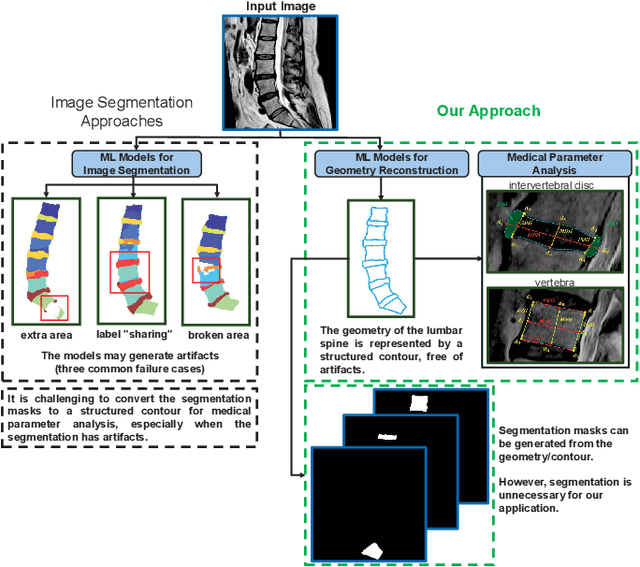
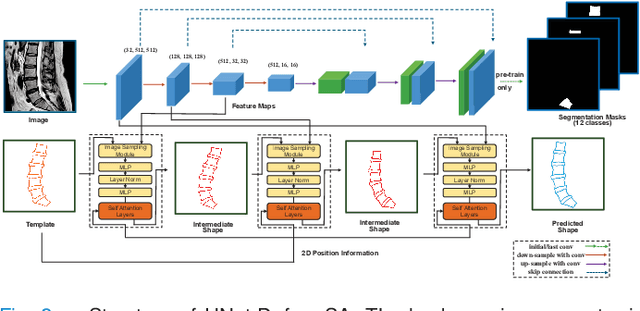
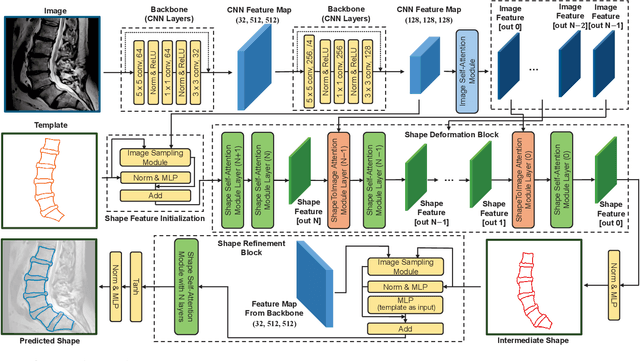

Abstract:Lumbar disc degeneration, a progressive structural wear and tear of lumbar intervertebral disc, is regarded as an essential role on low back pain, a significant global health concern. Automated lumbar spine geometry reconstruction from MR images will enable fast measurement of medical parameters to evaluate the lumbar status, in order to determine a suitable treatment. Existing image segmentation-based techniques often generate erroneous segments or unstructured point clouds, unsuitable for medical parameter measurement. In this work, we present TransDeformer: a novel attention-based deep learning approach that reconstructs the contours of the lumbar spine with high spatial accuracy and mesh correspondence across patients, and we also present a variant of TransDeformer for error estimation. Specially, we devise new attention modules with a new attention formula, which integrates image features and tokenized contour features to predict the displacements of the points on a shape template without the need for image segmentation. The deformed template reveals the lumbar spine geometry in the input image. We develop a multi-stage training strategy to enhance model robustness with respect to template initialization. Experiment results show that our TransDeformer generates artifact-free geometry outputs, and its variant predicts the error of a reconstructed geometry. Our code is available at https://github.com/linchenq/TransDeformer-Mesh.
Optimizing Illuminant Estimation in Dual-Exposure HDR Imaging
Mar 04, 2024
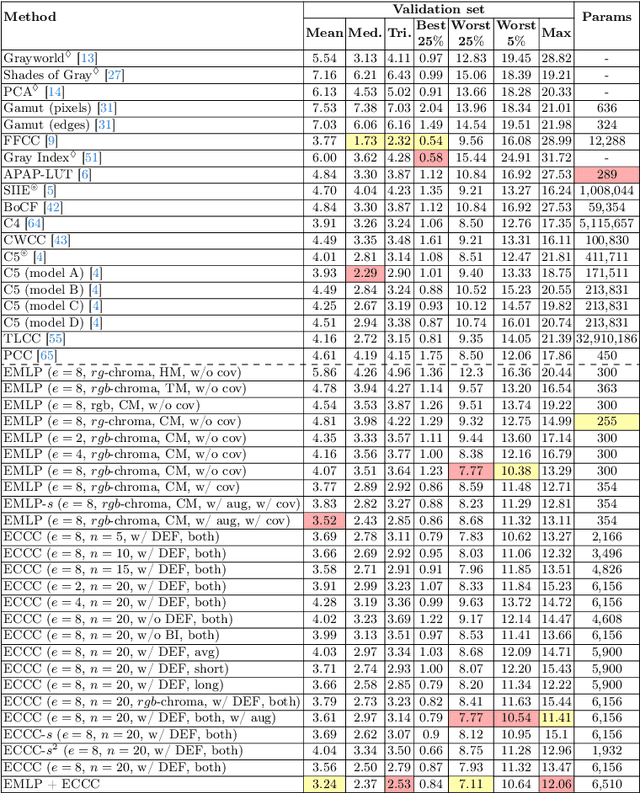
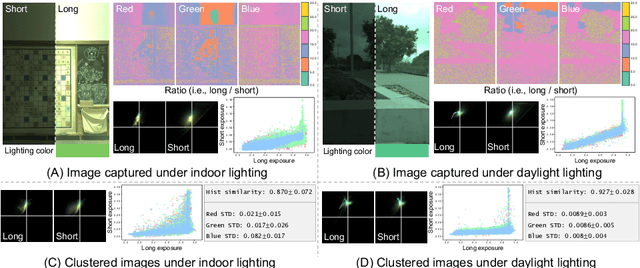
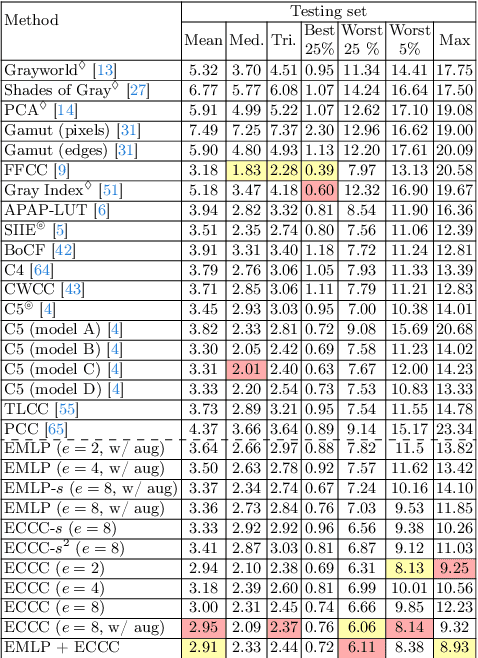
Abstract:High dynamic range (HDR) imaging involves capturing a series of frames of the same scene, each with different exposure settings, to broaden the dynamic range of light. This can be achieved through burst capturing or using staggered HDR sensors that capture long and short exposures simultaneously in the camera image signal processor (ISP). Within camera ISP pipeline, illuminant estimation is a crucial step aiming to estimate the color of the global illuminant in the scene. This estimation is used in camera ISP white-balance module to remove undesirable color cast in the final image. Despite the multiple frames captured in the HDR pipeline, conventional illuminant estimation methods often rely only on a single frame of the scene. In this paper, we explore leveraging information from frames captured with different exposure times. Specifically, we introduce a simple feature extracted from dual-exposure images to guide illuminant estimators, referred to as the dual-exposure feature (DEF). To validate the efficiency of DEF, we employed two illuminant estimators using the proposed DEF: 1) a multilayer perceptron network (MLP), referred to as exposure-based MLP (EMLP), and 2) a modified version of the convolutional color constancy (CCC) to integrate our DEF, that we call ECCC. Both EMLP and ECCC achieve promising results, in some cases surpassing prior methods that require hundreds of thousands or millions of parameters, with only a few hundred parameters for EMLP and a few thousand parameters for ECCC.
SymTC: A Symbiotic Transformer-CNN Net for Instance Segmentation of Lumbar Spine MRI
Jan 25, 2024



Abstract:Intervertebral disc disease, a prevalent ailment, frequently leads to intermittent or persistent low back pain, and diagnosing and assessing of this disease rely on accurate measurement of vertebral bone and intervertebral disc geometries from lumbar MR images. Deep neural network (DNN) models may assist clinicians with more efficient image segmentation of individual instances (disks and vertebrae) of the lumbar spine in an automated way, which is termed as instance image segmentation. In this work, we proposed SymTC, an innovative lumbar spine MR image segmentation model that combines the strengths of Transformer and Convolutional Neural Network (CNN). Specifically, we designed a parallel dual-path architecture to merge CNN layers and Transformer layers, and we integrated a novel position embedding into the self-attention module of Transformer, enhancing the utilization of positional information for more accurate segmentation. To further improves model performance, we introduced a new data augmentation technique to create synthetic yet realistic MR image dataset, named SSMSpine, which is made publicly available. We evaluated our SymTC and the other 15 existing image segmentation models on our private in-house dataset and the public SSMSpine dataset, using two metrics, Dice Similarity Coefficient and 95% Hausdorff Distance. The results show that our SymTC has the best performance for segmenting vertebral bones and intervertebral discs in lumbar spine MR images. The SymTC code and SSMSpine dataset are available at https://github.com/jiasongchen/SymTC.
Adaptive Adversarial Training to Improve Adversarial Robustness of DNNs for Medical Image Segmentation and Detection
Jun 02, 2022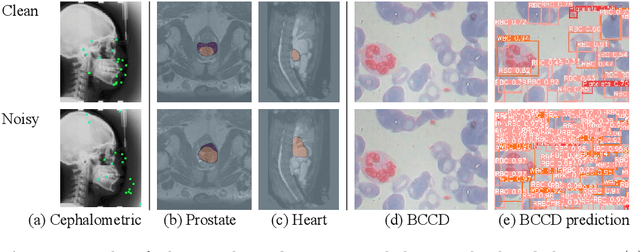
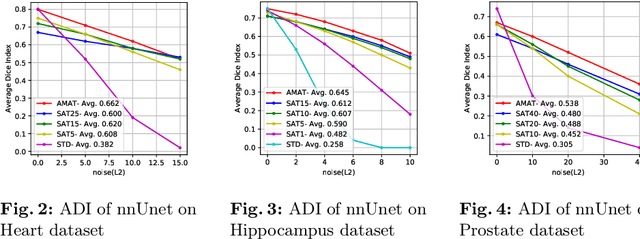
Abstract:Recent methods based on Deep Neural Networks (DNNs) have reached high accuracy for medical image analysis, including the three basic tasks: segmentation, landmark detection, and object detection. It is known that DNNs are vulnerable to adversarial attacks, and the adversarial robustness of DNNs could be improved by adding adversarial noises to training data (i.e., adversarial training). In this study, we show that the standard adversarial training (SAT) method has a severe issue that limits its practical use: it generates a fixed level of noise for DNN training, and it is difficult for the user to choose an appropriate noise level, because a high noise level may lead to a large reduction in model performance, and a low noise level may have little effect. To resolve this issue, we have designed a novel adaptive-margin adversarial training (AMAT) method that generates adaptive adversarial noises for DNN training, which are dynamically tailored for each individual training sample. We have applied our AMAT method to state-of-the-art DNNs for the three basic tasks, using five publicly available datasets. The experimental results demonstrate that our AMAT method outperforms the SAT method in adversarial robustness on noisy data and prediction accuracy on clean data. Please contact the author for the source code.
A Regularization Method to Improve Adversarial Robustness of Neural Networks for ECG Signal Classification
Oct 19, 2021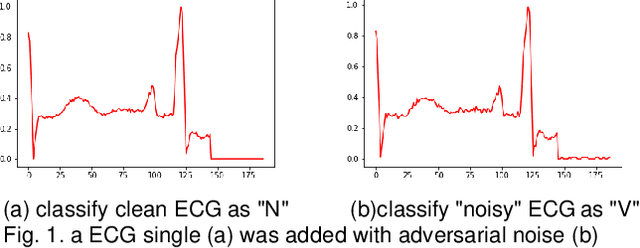
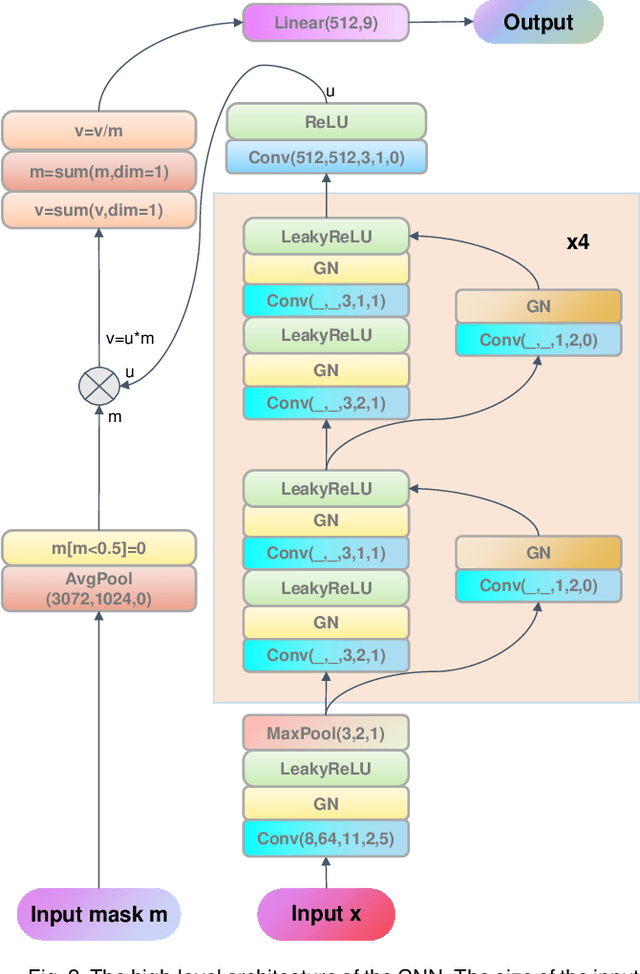
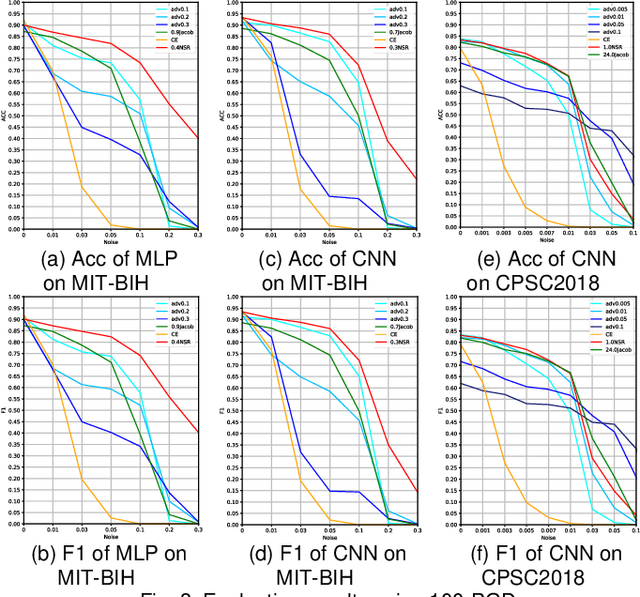
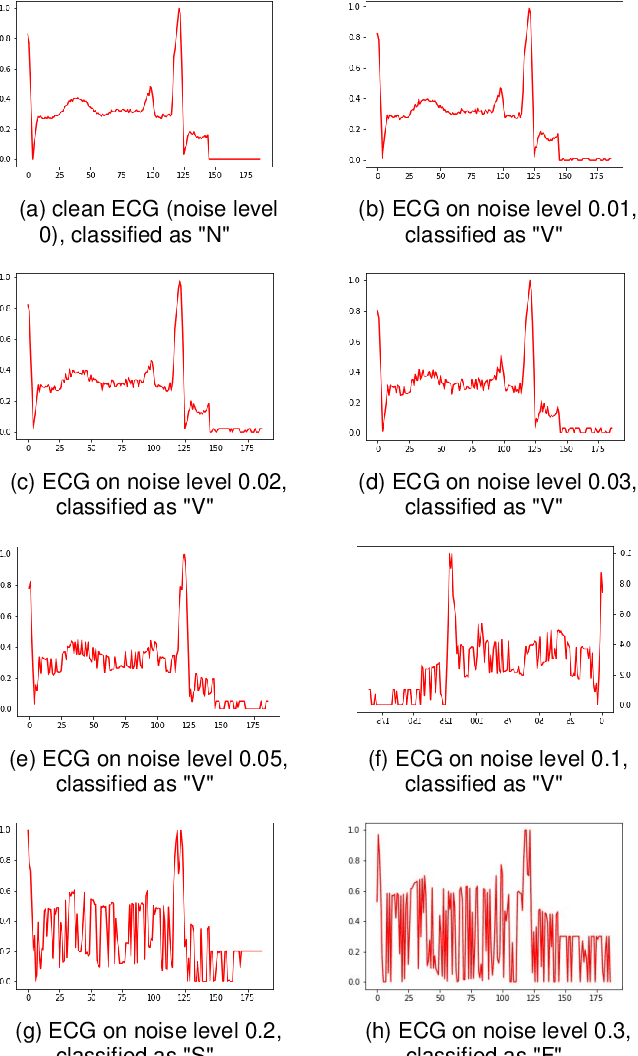
Abstract:Electrocardiogram (ECG) is the most widely used diagnostic tool to monitor the condition of the human heart. By using deep neural networks (DNNs), interpretation of ECG signals can be fully automated for the identification of potential abnormalities in a patient's heart in a fraction of a second. Studies have shown that given a sufficiently large amount of training data, DNN accuracy for ECG classification could reach human-expert cardiologist level. However, despite of the excellent performance in classification accuracy, DNNs are highly vulnerable to adversarial noises that are subtle changes in the input of a DNN and may lead to a wrong class-label prediction. It is challenging and essential to improve robustness of DNNs against adversarial noises, which are a threat to life-critical applications. In this work, we proposed a regularization method to improve DNN robustness from the perspective of noise-to-signal ratio (NSR) for the application of ECG signal classification. We evaluated our method on PhysioNet MIT-BIH dataset and CPSC2018 ECG dataset, and the results show that our method can substantially enhance DNN robustness against adversarial noises generated from adversarial attacks, with a minimal change in accuracy on clean data.
Optimal Distribution Design for Irregular Repetition Slotted ALOHA with Multi-Packet Reception
Oct 15, 2021
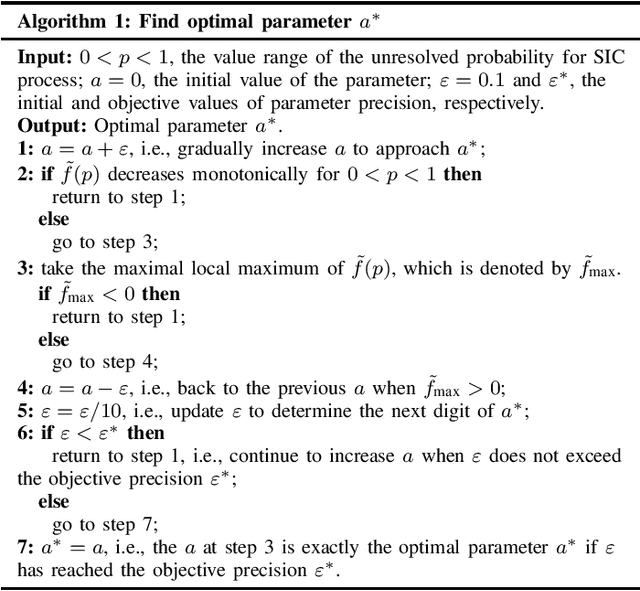
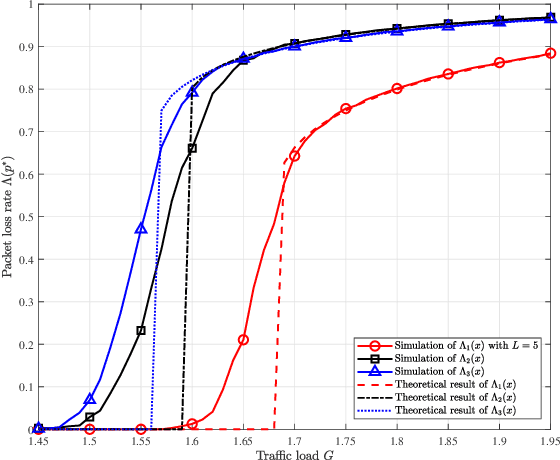
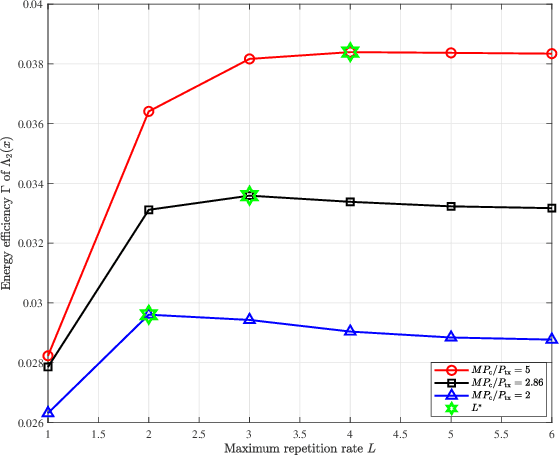
Abstract:Associated with multi-packet reception at the access point, irregular repetition slotted ALOHA (IRSA) holds a great potential in improving the access capacity of massive machine type communication systems. Considering the time-frequency resource efficiency, K = 2 (multi-packet reception capability) may be the most suitable scheme for scenarios that allow smaller resource efficiency in exchange for greater throughput. In this paper, we analytically derive an optimal transmission probability distribution for IRSA with K = 2, which achieves a significant higher load threshold than the existing benchmark distributions. In addition, the energy efficiency optimization in terms of the maximum repetition rate is also presented.
Flexible Clustered Federated Learning for Client-Level Data Distribution Shift
Aug 22, 2021

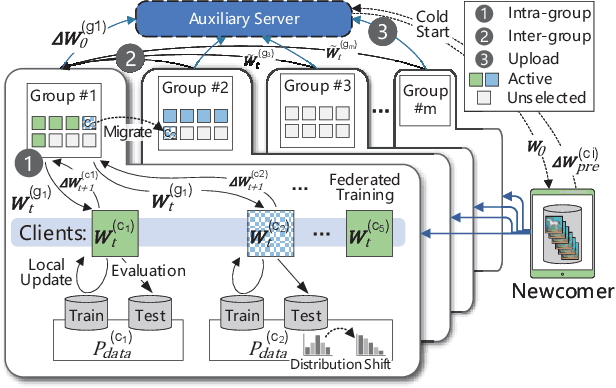
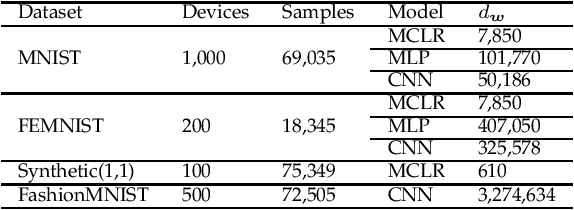
Abstract:Federated Learning (FL) enables the multiple participating devices to collaboratively contribute to a global neural network model while keeping the training data locally. Unlike the centralized training setting, the non-IID, imbalanced (statistical heterogeneity) and distribution shifted training data of FL is distributed in the federated network, which will increase the divergences between the local models and the global model, further degrading performance. In this paper, we propose a flexible clustered federated learning (CFL) framework named FlexCFL, in which we 1) group the training of clients based on the similarities between the clients' optimization directions for lower training divergence; 2) implement an efficient newcomer device cold start mechanism for framework scalability and practicality; 3) flexibly migrate clients to meet the challenge of client-level data distribution shift. FlexCFL can achieve improvements by dividing joint optimization into groups of sub-optimization and can strike a balance between accuracy and communication efficiency in the distribution shift environment. The convergence and complexity are analyzed to demonstrate the efficiency of FlexCFL. We also evaluate FlexCFL on several open datasets and made comparisons with related CFL frameworks. The results show that FlexCFL can significantly improve absolute test accuracy by +10.6% on FEMNIST compared to FedAvg, +3.5% on FashionMNIST compared to FedProx, +8.4% on MNIST compared to FeSEM. The experiment results show that FlexCFL is also communication efficient in the distribution shift environment.
Adversarial Robustness Study of Convolutional Neural Network for Lumbar Disk Shape Reconstruction from MR images
Feb 04, 2021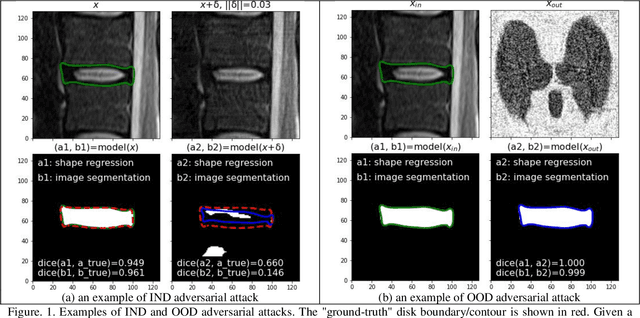


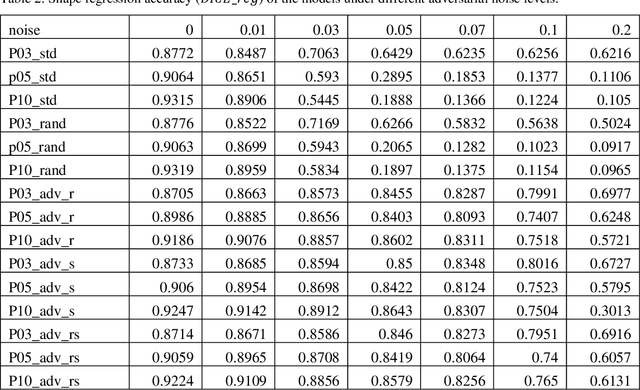
Abstract:Machine learning technologies using deep neural networks (DNNs), especially convolutional neural networks (CNNs), have made automated, accurate, and fast medical image analysis a reality for many applications, and some DNN-based medical image analysis systems have even been FDA-cleared. Despite the progress, challenges remain to build DNNs as reliable as human expert doctors. It is known that DNN classifiers may not be robust to noises: by adding a small amount of noise to an input image, a DNN classifier may make a wrong classification of the noisy image (i.e., in-distribution adversarial sample), whereas it makes the right classification of the clean image. Another issue is caused by out-of-distribution samples that are not similar to any sample in the training set. Given such a sample as input, the output of a DNN will become meaningless. In this study, we investigated the in-distribution (IND) and out-of-distribution (OOD) adversarial robustness of a representative CNN for lumbar disk shape reconstruction from spine MR images. To study the relationship between dataset size and robustness to IND adversarial attacks, we used a data augmentation method to create training sets with different levels of shape variations. We utilized the PGD-based algorithm for IND adversarial attacks and extended it for OOD adversarial attacks to generate OOD adversarial samples for model testing. The results show that IND adversarial training can improve the CNN robustness to IND adversarial attacks, and larger training datasets may lead to higher IND robustness. However, it is still a challenge to defend against OOD adversarial attacks.
 Add to Chrome
Add to Chrome Add to Firefox
Add to Firefox Add to Edge
Add to Edge